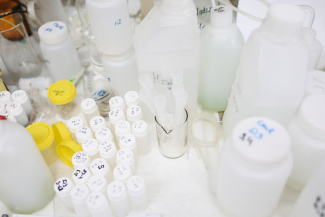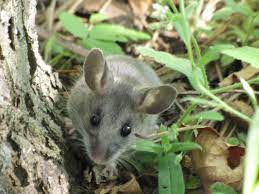Wild Animals and Zoonotic Pathogens
12 April 2023
University of Alberta researchers who will be handling wild animals, or materials derived from the animals, must complete a hazard assessment to identify, assess and control zoonotic pathogens (disease-causing microbes that can pass from animal to human) that may be associated with the population they are studying.
Groups should understand the risks associated with zoonotic pathogens and implement control measures regardless of whether or not there is an active outbreak of the disease in the population.
Animals Associated with Zoonotic Pathogens
Many University of Alberta researchers conduct work with wild animals that have the potential to transmit disease to humans. For example:
- Deer mice may carry hantavirus. Research groups working with deer mice should include hantavirus in their hazard assessment.
- Migratory waterfowl may carry avian influenza. Groups working with migratory waterfowl should include avian influenza in their hazard assessment.
To learn more about zoonotic pathogens associated with specific animal populations, refer to the following resources:
- Public Health Agency of Canada: Centre for Food-borne, Environmental and Zoonotic Infectious Diseases
- Canadian Food Inspection Agency
Control Measures for Work with Wild Animals
- To determine appropriate control measures for the work you will be doing, review the Safe Work Practice: Field Work with Animals.
- Ensure that you are storing and working with animal specimens brought back from the field in Containment Level 2 spaces.
- Ensure that you have registered your research space (and the specimens you will be handling) in ARISE, the U of A’s institutional research database.
- In your ARISE record, list any samples that you will store or use. Select from the Biological Specimens & Preparations pulldown:
- Wild animal blood, body fluids, feces or tissues [= any free-roaming feral vertebrate species]
- Commercial livestock blood, body fluids, feces or tissues [= cattle, swine, chickens, alpaca, etc. held in an enclosed space, feedlot or pasture]
- Companion animal blood, body fluids, feces or tissues [= dogs, cats and other pets, includes service animals]
- In your ARISE record, list any samples that you will store or use. Select from the Biological Specimens & Preparations pulldown:
Groups should understand the risks associated with zoonotic pathogens and implement control measures regardless of whether or not there is an active outbreak of the disease in the population.
For more information about working safely with biological materials at the University of Alberta, visit the HSE biosafety webpage or contact hse.info@ualberta.ca.
The University of Alberta is committed to the safety, health and well-being of our faculty, staff and students. Every day, we advance this commitment to safety through the Culture of Care.



